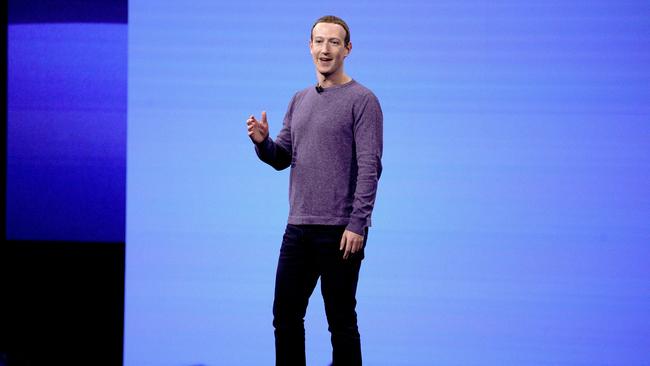Facebook makes massive first solar play in Texas
Facebook is building a solar farm believed to be one of the largest solar projects in the US.

Facebook is building a massive solar farm in West Texas that’s believed to be one of the largest solar projects in the US and the social media giant’s first direct investment in renewable energy.
Boston-based renewable energy developer Longroad Energy recently announced it was partnering with Facebook on the $US416 million project, just as Facebook is finishing construction of a data centre near Albuquerque.
The Prospero Solar project, just north of Odessa, Texas, will have a capacity of 379 megawatts, which is enough to power around 72,000 homes based on the national average, the Solar Energy Industries Association said. The project goes beyond Facebook’s goal to use renewable energy to power its data centres, where the social media giant stores photos, videos and other information that people post on the platform.
Prospero Solar is expected to be completed next year and will take up around 18 sq km - more than five times the size of Central Park in New York City.
Facebook will be the sole tax equity investor, Longroad said.
Ben Inskeep, a research analyst for EQ Research, a North Carolina-based renewable energy consulting firm, said it made sense for Facebook to invest in solar power because renewable energy was becoming more affordable and its data centres had huge operating costs.
“West Texas has some of the best solar resources in the nation,” Mr Inskeep said. “So it’s not about saying you support renewable energy. It makes good business sense.” Shell Energy North America and Facebook will share the power generated by the solar farm.
“Facebook is excited to be one of the first companies to use a direct investment to meet our renewable energy goals,” company energy strategy manager Peter Freed said in a statement.
CEO Mark Zuckerberg announced in April that Facebook was building six new solar projects to support its data centres. They house tens of thousands of computer servers, which are linked to the outside world through fibre-optic cables. “Our data centers are already some of the most energy efficient in the world, and last year we set a goal for all our data centers and offices to use 100 per cent renewable energy by 2020,” Mr Zuckerberg wrote on his personal Facebook page. “These new solar projects will help us reach that goal.”
The development comes as Facebook battles New Mexico regulators over a new transmission line to its data centre in the small town of Los Lunas.
State regulators last month declined to reconsider their decision for the largest utility to bill Facebook $US39 million for the transmission line. They said ratepayers could not be charged for the project because the line wouldn’t benefit retail customers.
The Public Service Co. of New Mexico said it’s disappointed by the decision and is reviewing options on how to proceed.
The New Mexico data centre is one of seven such sites for Facebook, and includes six buildings for data storage. It is situated on a patch of desert at the edge of Los Lunas, which lies just beyond the edge of New Mexico’s largest metropolitan area and along the Rio Grande.
Each of the data centre’s buildings is roughly the size of four football fields and has several “data halls,” or darkened, vast rooms where Facebook plans to store dozens of rows of towering servers. Two of those halls are now in operation, while construction that began more than two years ago will continue until 2023, the company said.
AP



To join the conversation, please log in. Don't have an account? Register
Join the conversation, you are commenting as Logout